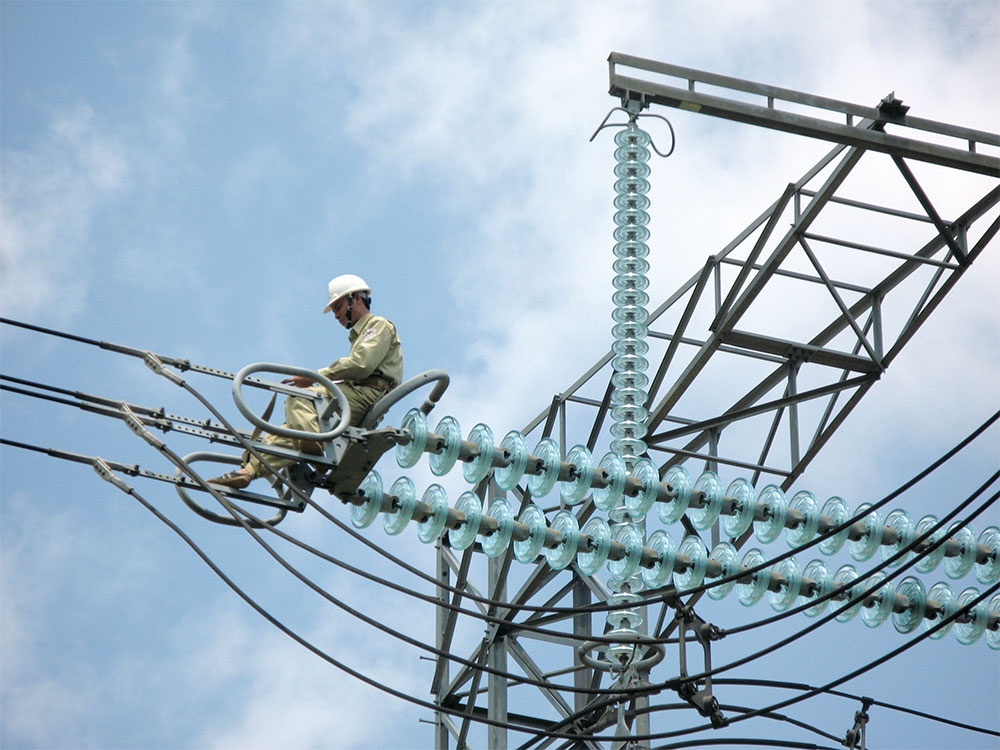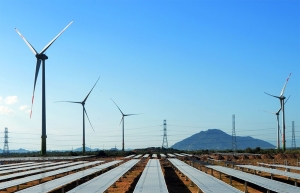Rising energy costs to require roadmap for businesses’ timely adjustment of strategies
This time of year is critical for the competitiveness of foreign-owned businesses in Vietnam. Last Tuesday, Hark-Kyu Park, president and CFO of Samsung Electronics, expressed the company’s expectation that the Vietnamese government would continue to support its development. He said that Vietnam is an essential partner and Samsung’s biggest manufacturing hub worldwide.
 |
| Rising energy costs to require roadmap for businesses’ timely adjustment of strategies. Photo: Le Toan |
Do Nguyet Anh, chairman of the board at Northern Electric Equipment (NEE), said last month that Samsung in northern Vietnam “stopped several manufacturing lines” and “restricted satellite operations.” The longer-than-usual production halt resulted in a drop of 300 million kWh. Samsung is now one of NEE’s major clients in terms of power use.
The steady recovery of domestic production is anticipated to result in a rise of 8-9 per cent in the industrial production index in 2023. Since Q4 of 2022, however, industrial output growth has slowed, reflecting uncertainties caused by low global demand and ongoing pandemic disruptions.
Anh observed that several significant power users, including steel, cement, and electronics, are lowering output and cutting manufacturing lines, reducing energy consumption. She said that NEE’s production position was “far more challenging” as a result.
In 2022, the growth of commercial power in the north slowed to around 5 per cent, the lowest level in almost a decade. In prior years, this percentage usually ranged around 11-17 per cent.
Although it has not been verified that the price of energy will rise, variables influencing the input of the power sector are exerting pressure on the selling price of electricity. In accordance with 2017 legislation, the average retail price of electricity is modified depending on input changes at all stages of energy production, transmission, distribution, and retailing. Electricity of Vietnam (EVN) is permitted to raise the figure if the average retail price of electricity increases 3-5 per cent.
From 5-10 per cent of the average retail price of power, EVN must seek clearance from the Ministry of Industry and Trade (MoIT); beyond 10 per cent, the prime minister can raise rates. According to experts, it is likely that EVN’s plan is to raise the average power price above 5 per cent, stemming from consultation with the MoIT and associated units.
Currently, the average retail price of electricity is 8 US cents per kWh; if a rise of 5-9 per cent is suggested, it may increase 0.4-0.72 US cents per kWh, and the average power price to consumers might climb 8.4-8.7 US cents per kWh. If the proposal rises by more than 10 per cent, the average price of electricity may increase by more than 0.8 US cents per kWh and may increase by more than 8.7 US cents per kWh.
“Therefore, the pressure would be enormous for textile businesses if EVN increases electricity costs as recommended,” said Pham Van Viet, general manager of Viet Thang Jeans. Electricity costs a typical factory between $26,000 and $43,000 each month.
Viet is afraid that if the price of power increases, the company’s products will no longer be able to compete. Due to rising inflation, decreased orders, and enormous inventories on the US and European markets, the output market is extremely competitive.
“We still do not have enough orders for the first months of 2023. The company’s capacity has been decreased by 80 per cent, and employees have been laid off on a rotating basis,” Viet said.
“If the government is compelled to raise the price of power, there should be a roadmap and an early notification so that enterprises may adjust their production and business strategies appropriately,” Viet added. “The government must also evaluate the rate of growth in power prices, which must be commensurate with the resilience of companies.”
The cost of electricity is particularly high for energy-intensive businesses like cement, metallurgy, and seafood processing. Tran Van Linh, chairman of Thuan Phuoc Seafoods and Trading Corporation, said that increasing power costs in 2023 is not “appropriate timing”.
Prawn exports are experiencing difficulty in the two major markets of the United States and the European Union, owing to decreased demand caused by inflation and intense competition from nations like India and Ecuador. Current production costs for Vietnamese shrimp are around $1 per kg higher than those of their rivals.
According to Linh, if the price of energy rises at this time, companies will simultaneously experience two negative effects – the price of electricity and the cost of inputs will increase, and production expenses will continue to rise. “Businesses inevitably lose money because buyers refuse to pay higher costs for prawns, limit orders, or even abandon the market,” Linh said.
When it comes to the rise in the selling price of energy from the standpoint of businesses, when input costs rise, the selling price must rise as well. Dr. Nguyen Duc Do, deputy director of the Institute of Economics and Finance, said that retail electricals have not yet been subject to competition from a commercial standpoint.
Do said that an increase in power rates at this time would also negatively impact production and people’s livelihoods. “The existing power market is still a strong monopoly, and the justification for the price hike is tough to digest,” he said.
“If there is no rise, on the other hand, the electrical business cannot sustain losses indefinitely. Therefore, the authorities must examine whether and by how much to raise prices in order to balance the interests of individuals, enterprises, and EVN.”
| The MoIT presented the Power Development Plan VIII (PDP8) for approval six times to the government in 2022. The competitive retail energy market is anticipated to be piloted before 2024, and after 2024, clients will be free to pick their electrical retailer. The piloting and promotion of this market, however, are currently behind schedule. Vietnam does not have a competitive retail energy market, and EVN is still in control of retail power distribution. The MoIT has presented to the government a report on PDP8 approval, which includes the average power price converted to USD in 2020. The ministry anticipates that the average price of electricity will progressively climb from 7.9 US cents per kWh in 2020 to 8.1-9 US cents per kWh in 2030, and with the aim in 2050 that it will reach 10.2-10.5 US cents per kWh. According to the MoIT’s plan, with the current exchange rate of almost VND25,000 per US dollar, the average power selling price in 2030 will range around 8.6-9 US cents per kWh. By 2050, the average price of power might reach 11 US cents per kWh at the current exchange rate. |
 | Energy security deemed more likely with appropriate offshore wind strategy Offshore wind power is not only expected to contribute to Vietnam’s net-zero goal by 2050 but also help with the country’s ever-increasing hunger for energy. |
What the stars mean:
★ Poor ★ ★ Promising ★★★ Good ★★★★ Very good ★★★★★ Exceptional
Related Contents
Latest News
More News
- EVN launches major power infrastructure projects nationwide (December 19, 2025 | 18:17)
- VAL inaugurates second production line to meet domestic animal feed demand (December 19, 2025 | 16:37)
- Sun Group pioneers urban tram system in Phu Quoc (December 19, 2025 | 15:00)
- Top 10 notable events of Vietnam’s industry and trade sector in 2025 (December 19, 2025 | 14:00)
- Seven major projects launched to drive Hanoi’s next growth phase (December 19, 2025 | 14:00)
- Rare, beautiful, sustainable: the mark of iconic real estate (December 19, 2025 | 08:00)
- Mondelez Kinh Do - a chapter of purpose-led leadership in Vietnam (December 18, 2025 | 09:44)
- VNPAY services receive the highest-level PCI DSS international security certificates for six consecutive years (December 17, 2025 | 23:47)
- F&N deepens investment in Vinamilk (December 17, 2025 | 09:00)
- Long-term capital seen as key hurdle to green growth (December 16, 2025 | 08:00)

 Tag:
Tag:






















 Mobile Version
Mobile Version